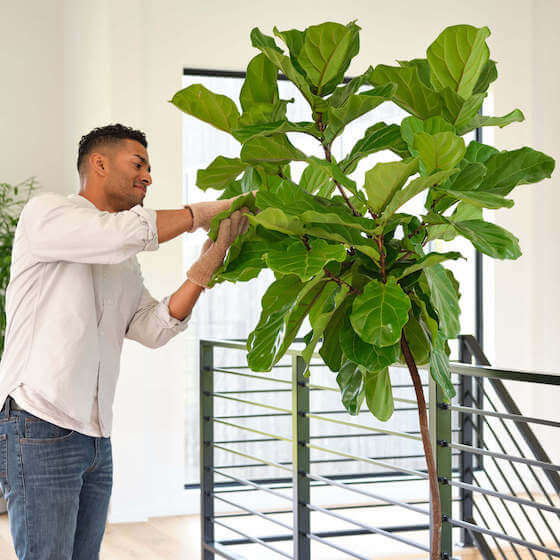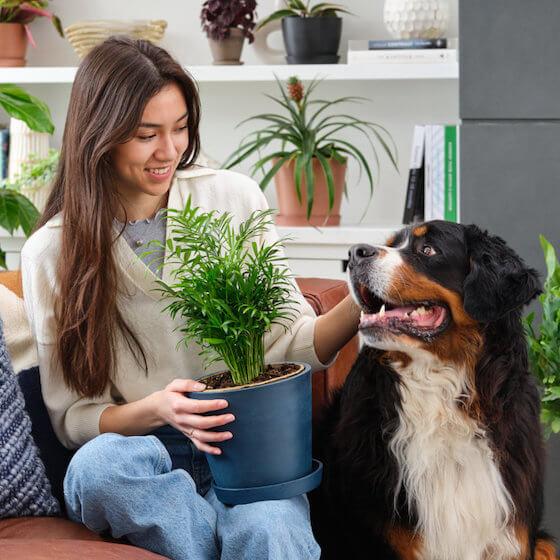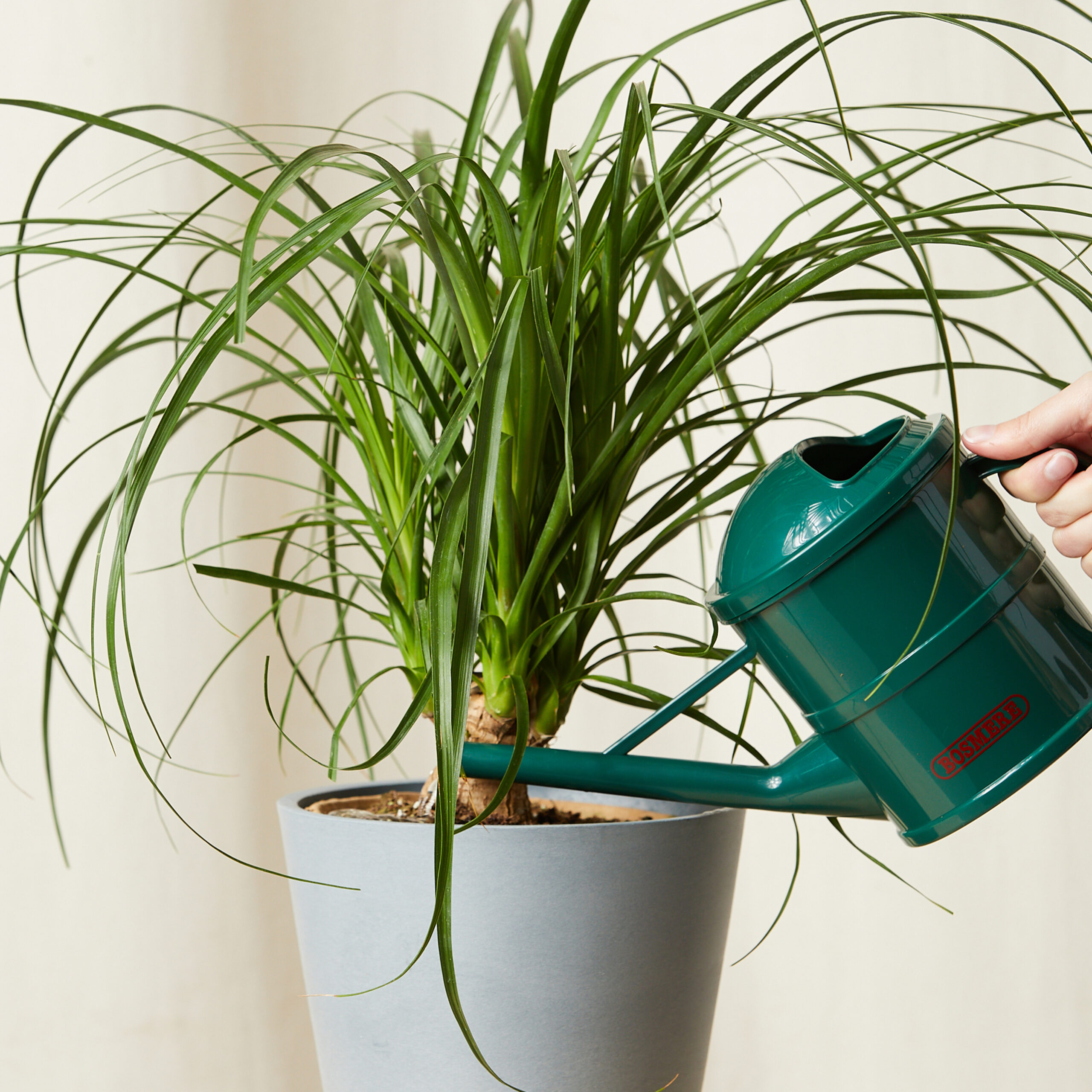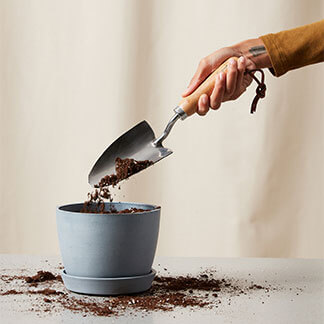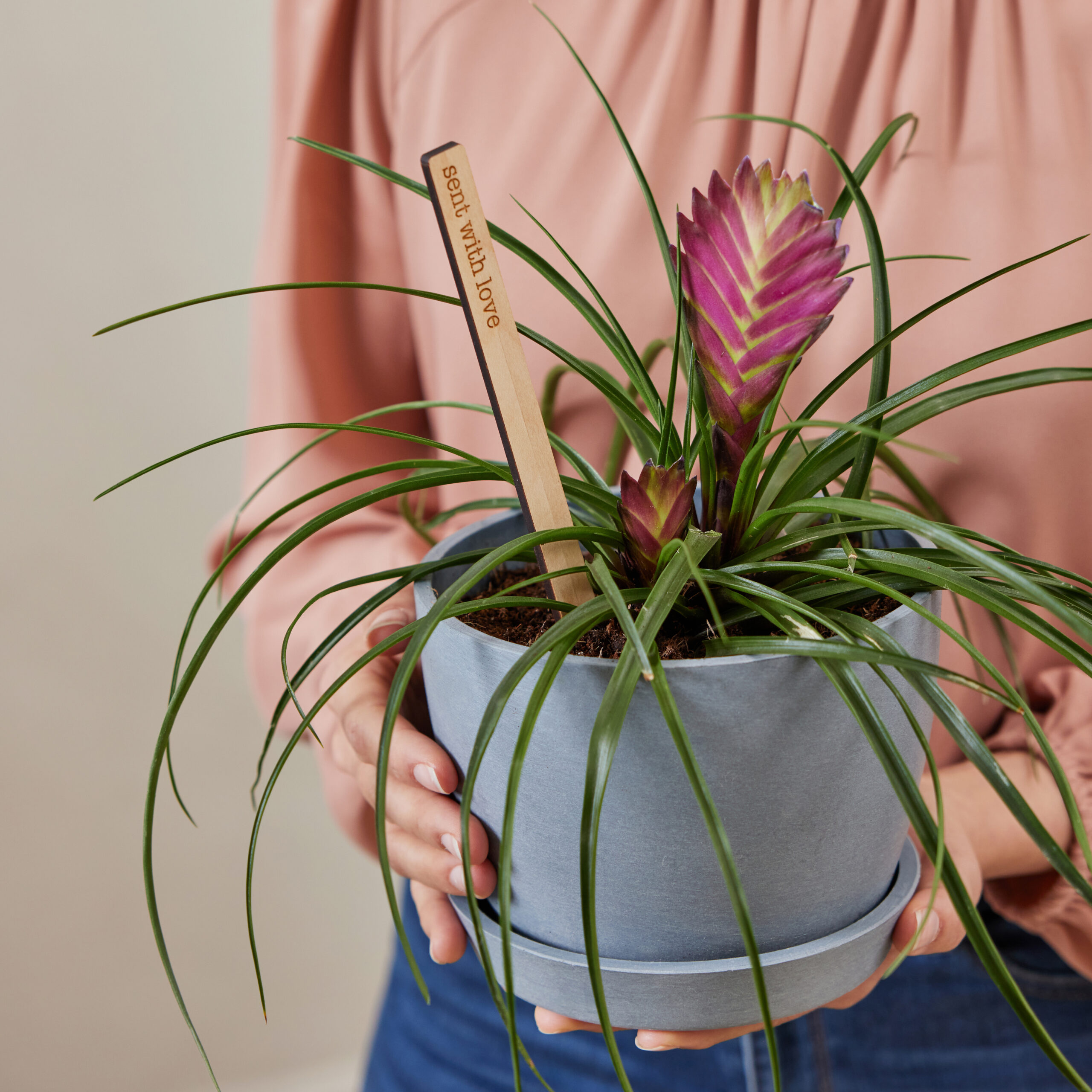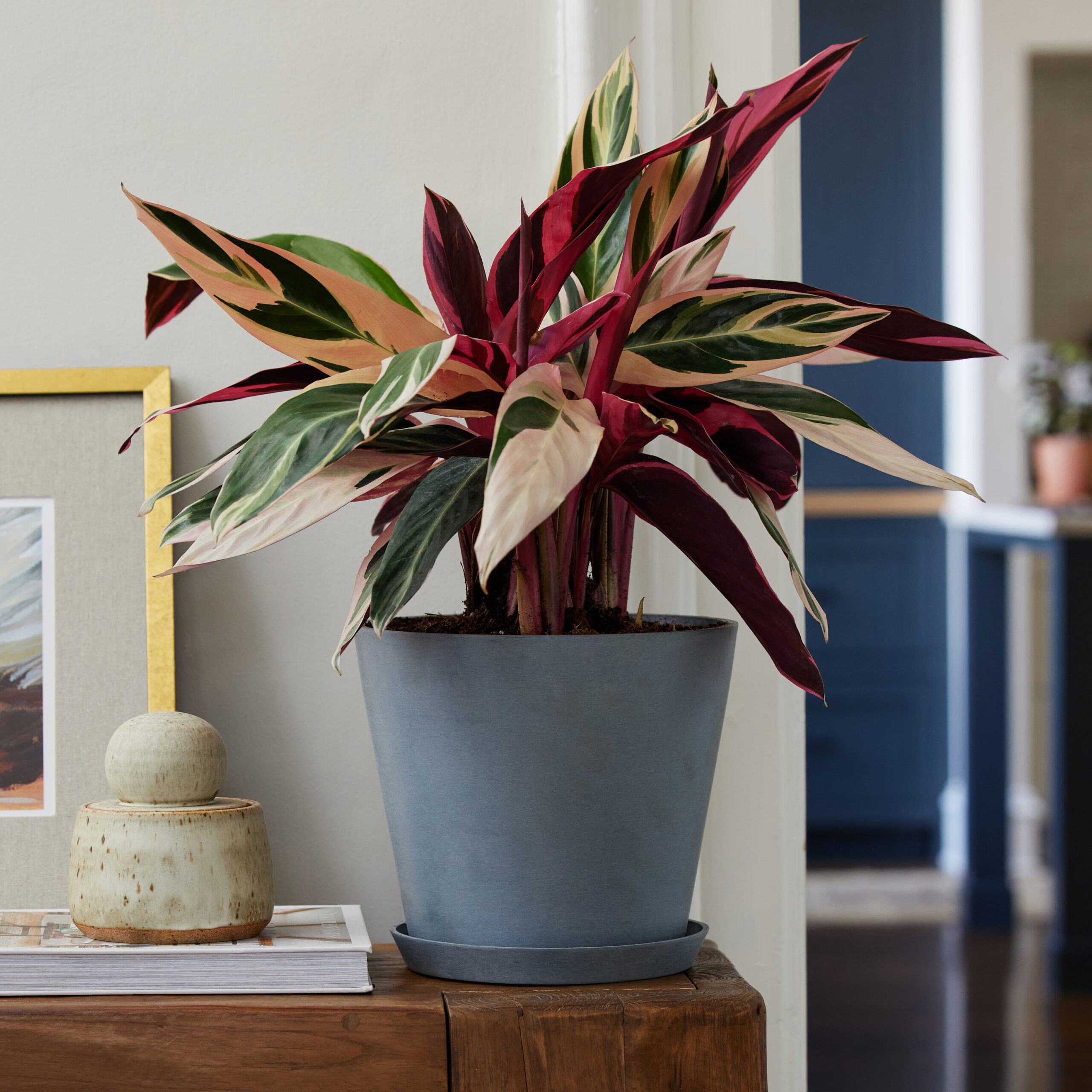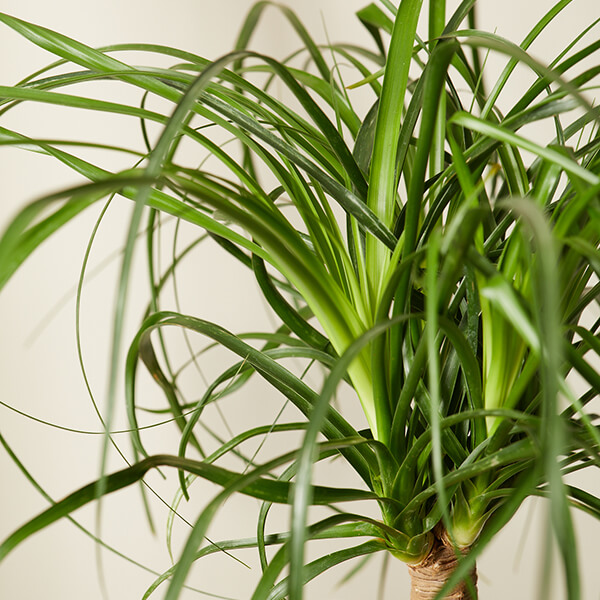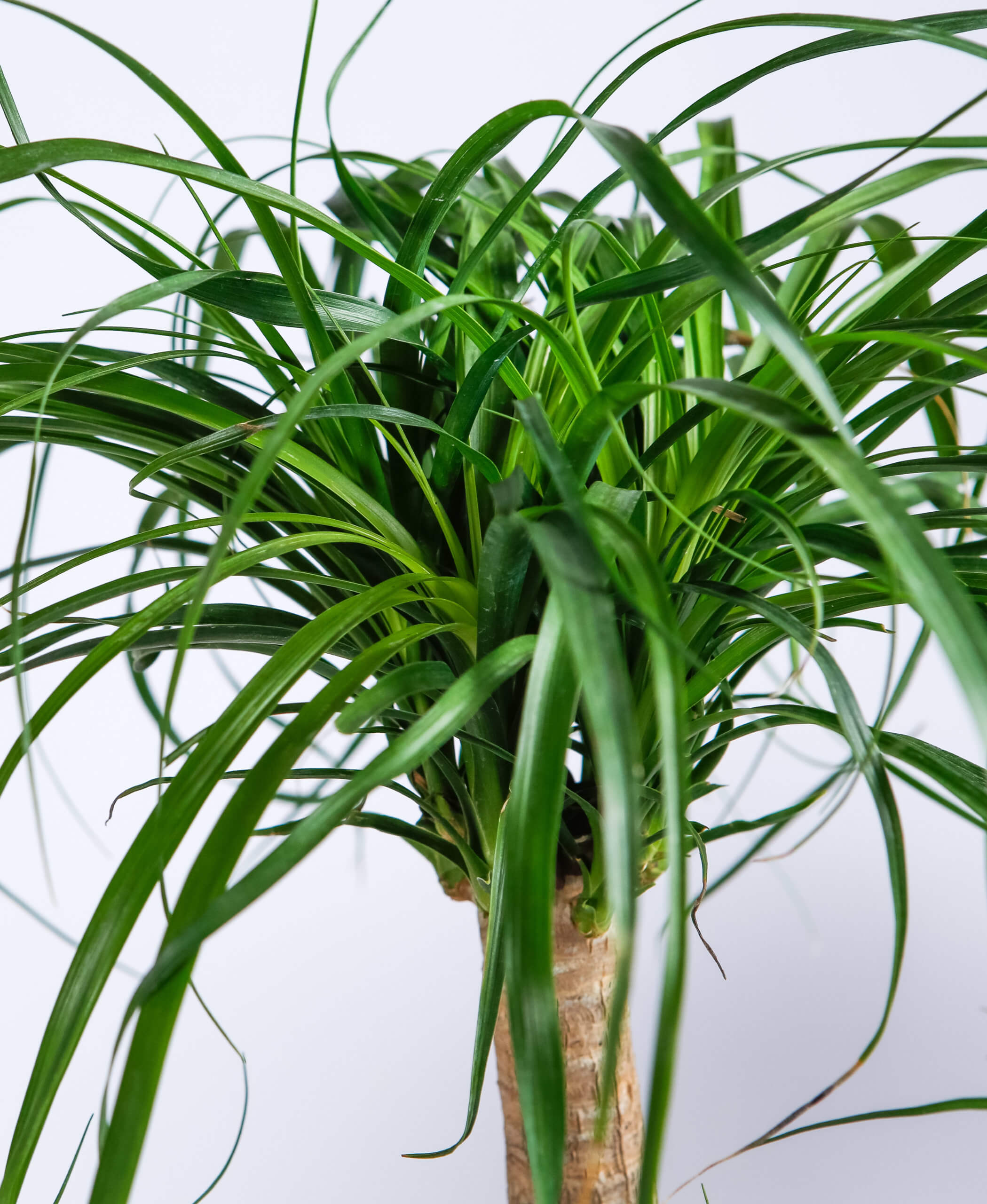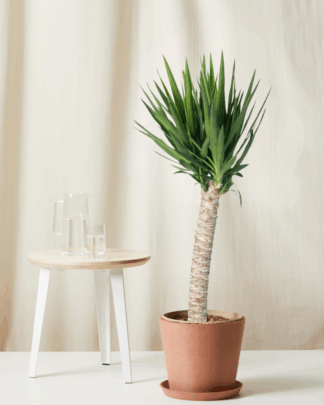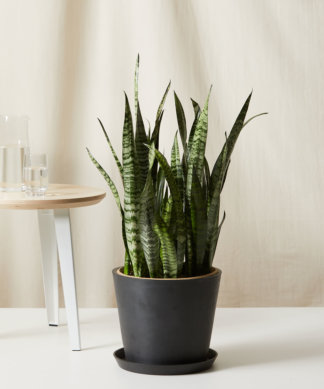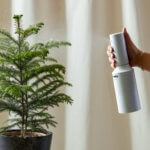How to care for your Ponytail Palm
Use these instructions to care for a Ponytail Palm. This guide will tell you how to water a Ponytail Palm; its light, temperature, humidity preferences and any additional care it might need to help it grow.
Pigtail Palm
Your Pigtail Palm prefers bright indirect light to full sun.
Water your Pigtail Palm when the soil is completely dry. Water until liquid flows through the drainage hole at the bottom of the pot and discard any water that has accumulated in the saucer.
As with most succulents, your Pigtail Palm will thrive in dry conditions. The drier the air, the better!
Protect your palm from cold drafts from windows, air conditioning vents, or doors. This plant prefers normal room temperatures between 60-80 degrees.
For best results, use a general houseplant fertilizer only once in the spring and once in the summer. Any more than that and your Pigtail Palm may develop brown tips on the leaves.
Completely non-toxic to humans and pets.
Your Pigtail Palm leaves are sensitive to injury and tend to get dark at the ends. Cutting back the tips of the leaves is a good way to preserve the appearance of the plant. The key is to use a pair of sharp scissors to cut off just the discolored parts.
Ponytail Palm
Originating in the southeastern desert of Mexico, the Ponytail Palm flourishes under direct sunlight or under bright, indirect light. Keeping this plant outdoors during the summer proves to be beneficial for sun exposure. However, if you move the plant indoors, you might need to supplement with grow lights.
Ponytail Palm care doesn’t call for a lot of watering. Once a week or every two weeks suffices since the trunk stores water. Because of this natural survival trait, you might take care not to overwater your plant. During the winter, you can cut back on the watering frequency to once a month.
Due to its desert origins, the Ponytail Palm prefers dry air. However, you might consider placing your plant away from cold drafts and air vents.
Your Ponytail Palm will love warm temperatures above 60℉. If your plant stays outdoors or if the temperature in the room drops to 50℉, it can withstand the change but not for long periods. Keeping your Ponytail Palm warm is the best option.
Effective Ponytail Palm care includes weekly feedings with a liquid fertilizer. Likewise, you can apply slow-release pellets, but remember to carefully follow the instructions on the label. During winter, you can reduce the number of feedings as the plant goes into its dormant phase.
The pet safe Ponytail Palm is non-toxic to humans, cats, and dogs.
Your Ponytail Palm leaves are sensitive to injury and tend to get dark at the ends. Cutting back the tips of the leaves is a good way to preserve the appearance of the plant. The key is to use a sharp scissors to cut off just the discolored parts.
